Sydney’s new architectural icon, the 3XN-designed Quay Quarter Tower, was named World Building of the Year 2022 at the fifteenth annual World Architecture Festival (WAF) in Lisbon. It also won the International High-Rise Award 2022/23.
When one thinks of Sydney, the idiosyncratic silhouette of the Sydney Opera House inevitably comes to mind. Designed by Danish architect and Pritzker Architecture Prize winner Jørn Utzon, the Sydney landmark is one of the most striking and famous buildings of the 20th century.
Once again, Danes have made architectural history in Sydney: The new Quay Quarter Tower (QQT) by 3XN Architects is considered the most ambitious building designed by a Danish architectural firm in Sydney since then.
The social dimension of the Quay Quarter Tower
The project was planned in August 2014 for the international competition announced by the developer AMP Capital in cooperation with the City of Sydney. The new tower at 50 Bridge Street in Sydney’s Circular Quay district is visible from many vantage points throughout the city.
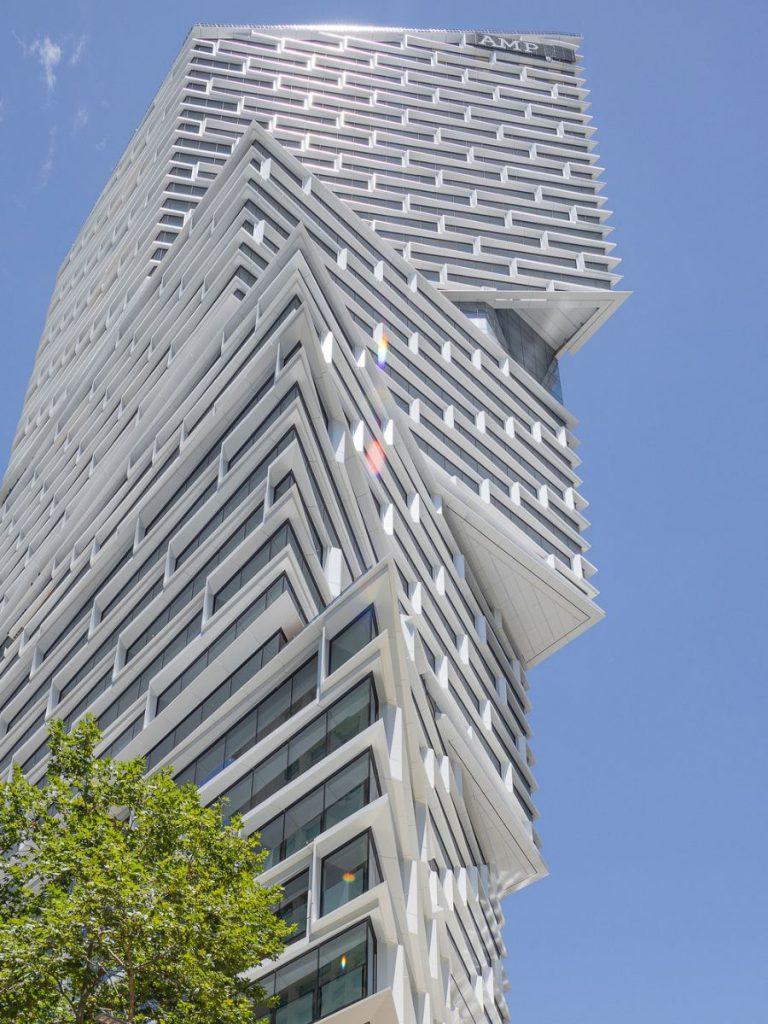
In response to this unique site, 3XN designed a tower of stacked, twisted structures that is both sculptural and functional. Interior spaces were created that emphasized a sense of community, health, well-being, knowledge sharing, and interaction – including through the atrium design and terrace spaces.
Fantastic view thanks to “displaced massing”.
The tower was designed simultaneously “from the inside out and from the outside in. And by the way, this “shifted massing” ensures optimal views for the residents.
“We wanted to translate the synergy, intimacy and connections found and lived in a low-rise office building into a high-rise,” Kim Herforth Nielsen, founder and creative director of 3XN, was quoted in media at the time. Dividing the Quarter Quay Tower into five separate volumes and placing an atrium at the base of each of the structures creates smaller, more intimate social environments, he said.
3XN: A lot of wood lately
But that’s not all: in addition to the parameters of human and social added value, 3XN is also genuinely concerned with recyclability and sustainability. And so 3XN has recently attracted particular attention with its innovative timber buildings, such as the Timber office complex T3 Bayside in Toronto or the “Woodscraper” Tilia Tower in Lausanne, Switzerland.
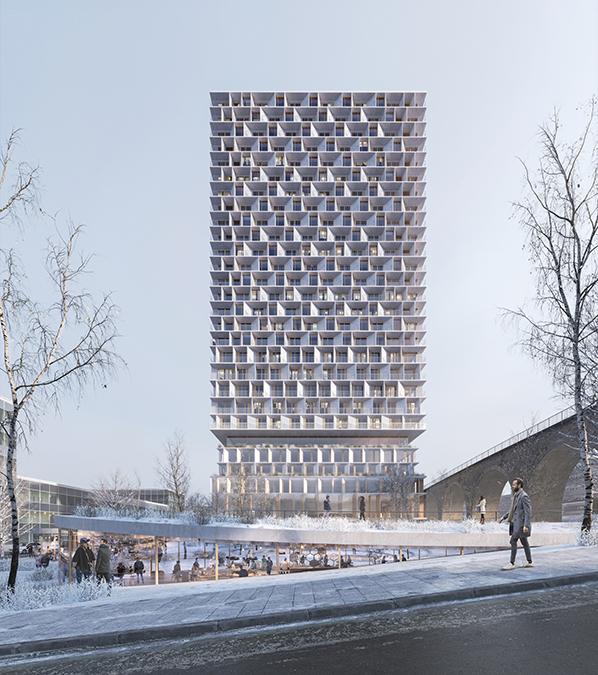
And now 3XN, which includes the innovation incubator GXN and is part of the Circle House Lab network, has received two coveted awards for the nearly 50-story office tower: On the one hand, the QQT was declared World Building of the Year 2022 at the fifteenth annual World Architecture Festival (WAF) in Lisbon.
The WAF jury includes such luminaries as Tracy Meller of Rogers Stirk Harbour + Partners, Jo Noero of Noero Architects, John Wardle of John Wardle Architects, Issa Diabaté of Koffi & Diabaté Architectes, and Murat Tabanlıoğlu of Tabanlioglu Architects.
And secondly, the Danish architectural firm 3XN has won the 10th International High-Rise Award (IHA) for the Quay Quarter Tower. The office tower is thus considered the most innovative high-rise building in the world in 2022/2023.
QQT: Best among 5 finalists
Kim Herforth Nielsen and Fred Holt, 3XN partner and Australian studio director, thus join a list of award winners that includes the likes of Norra Tornen of OMA (2020), Torre Reforma of LBR&A Arquitectos (2018), 57 West of BIG (2016), and Torre Agbar of Ateliers Jean Nouvel (2006).
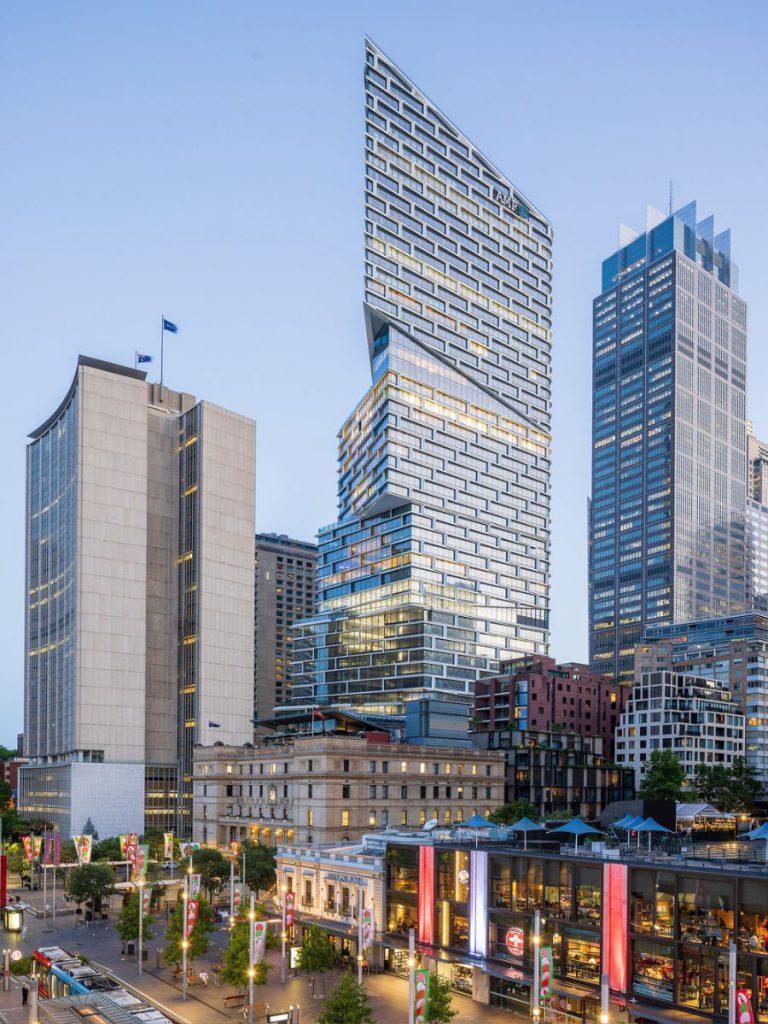
More than 1,000 projects from 13 countries completed in the last two years were shortlisted. The four other finalists against which the Quay Quarter Tower prevailed are the Vancouver House by BIG, the TrIIIple Towers in Austria by Henke Schreieck Architects, The Bryant in the USA by David Chipperfield Architects and the Singapore State Courts by Serie Architects+ Multiply Architects.
An “act of radical sustainability”
The international IHA jury, which included Sven Thorissen, director and architect of MVRDV, Melkan Gürsel and Bart Lootsma, was particularly impressed by the innovative solutions in a time of growing ecological challenges.
Making of the Quay Quarter Tower – architectural upcycling of an entire high-rise building is possible.
The 206-meter Quay Quarter Tower proves that architectural upcycling is possible on a large scale. Completed in April 2022, the tower is now an identity-forming part of Sydney’s new inner-city business district, the bay behind the famous Opera House.
Instead of demolishing the former AMP Centre from 1976, the client and architects decided to integrate large parts of the existing support structure into a new high-rise building. Literally, Nielsen spoke of an “act of radical sustainability.” At the same time, he said, six to nine months were saved in demolition and construction time. This was also reflected positively in the construction costs.
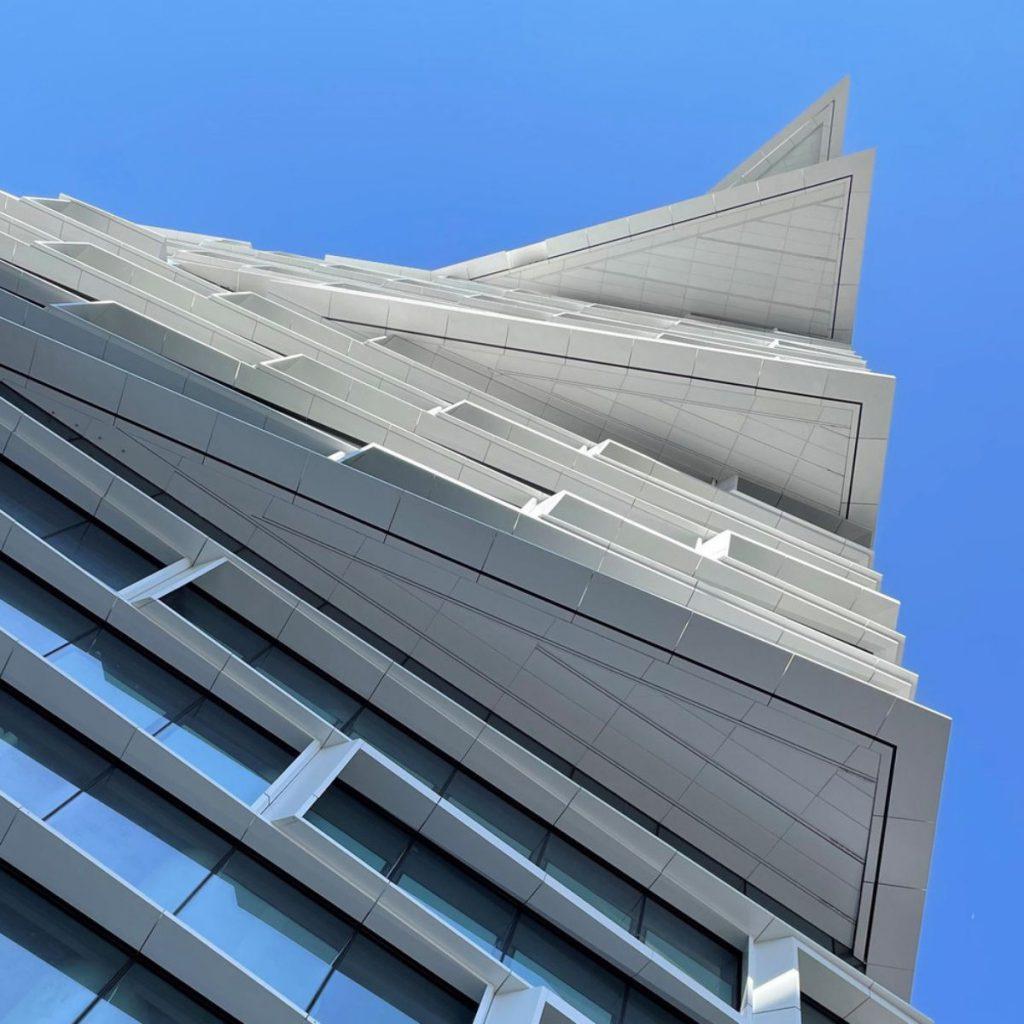
12,000 tons of CO2 saved, a lot of space gained
In this way, two-thirds of the beams, columns, floor slabs and almost the entire core from the 1970s could be preserved. A complete demolition and conventional new construction would have consumed almost 12,000 tons more carbon dioxide, calculations show.
The cantilevered modules on the facade, which wrap around the five sections of the tower, reduce direct solar radiation by up to 30 percent. Among other things, this eliminates the need for blinds inside.
The addition of new floors, the expansion of existing floors and the new podium have added 45,000 square meters of floor space. This is roughly equivalent to doubling the area before.
City revitalization
Thanks to the twisting of the tower, a series of outdoor terraces are created, which are directly connected to the multi-storey indoor atriums. These contain common rooms for the tenants of the individual blocks.
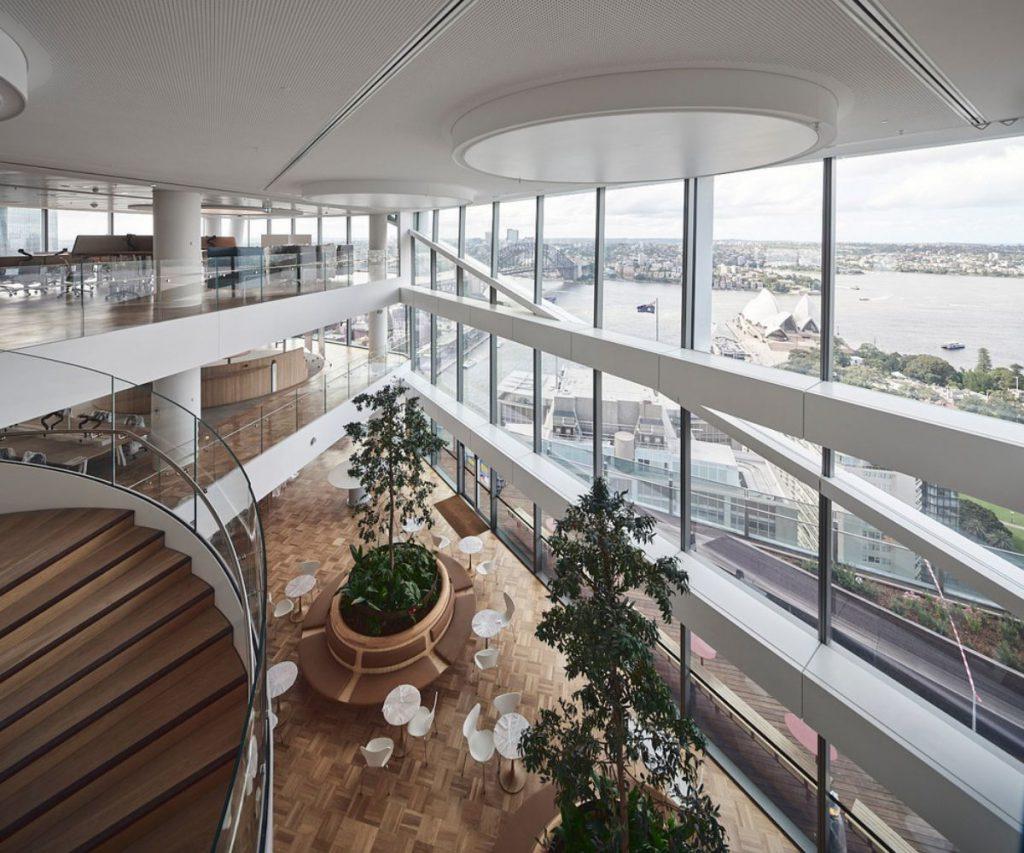
In contrast to the “vertical villages” that naturally result from the individual tower bodies, the base represents a kind of “horizontal” village. It enlivens the urban district after hours through mixed use, with an expanded retail and dining area. New arcades and transit connections lead Sydney’s residents and guests from numerous surrounding streets directly to the site of the action.
The WAF 2023 will take place in Singapore
WAF claims to be the world’s largest annual international live architecture event. Outstanding architectural achievements are honored in live presentations before an audience of high-ranking delegates and international juries.
The 16th edition of the festival will be held in Singapore in 2023 from November 29 to December 1.
Text: Linda Benkö
Pictures: 3XN / Fred Holt, Phil Noller, MartinSiegner / v2com

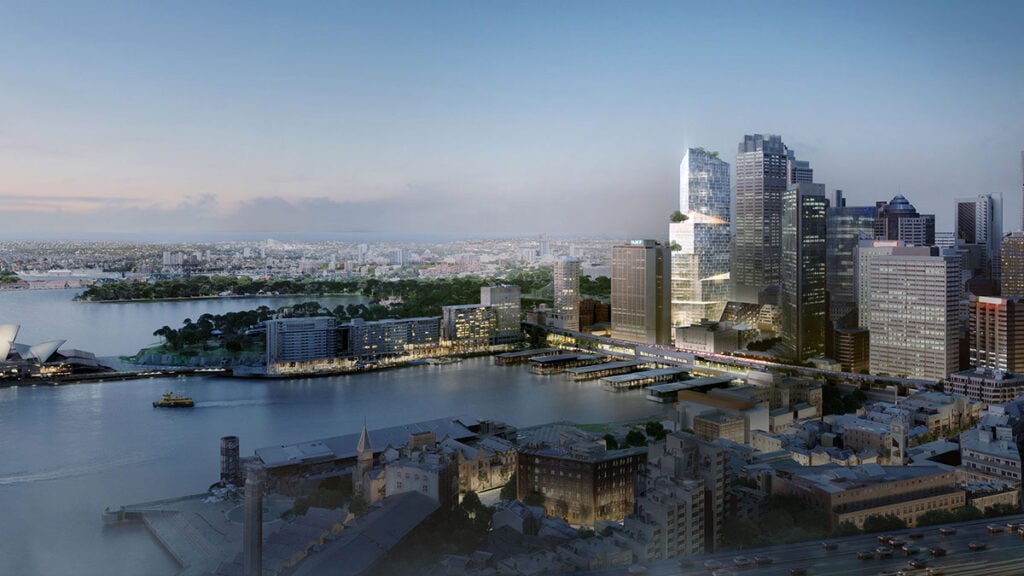

iThere are no comments
Add yours